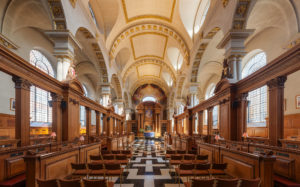
This is the first in a series of profiles of some of the main characters in the novel Dancing King. Every character has a story, one that is much larger and more detailed than what can be included in the narrative.
In Dancing King, Jay Lanham becomes the communications director for Michael Kent-Hughes and the monarchy. He is all of 29, but he already has considerable communications experience behind him. He was graduated from the University of Northumberland, receiving a communications degree (with honours). He had had internships with The Guardian and The Telegraph and was hired by The Daily Mail right after graduation (from an editorial perspective, The Guardian would be considered on the left side of the political spectrum, The Telegraph slightly more toward the center, and The Daily Mail on the right side of the spectrum).
He worked for The Daily Mail for three years, and he then joined the communications staff of Britrail. He quickly gained a reputation for crisis communications following two train accidents, but what put him on the map in the communications industry was his adroit handling of a threatened strike by rail workers. Lanham didn’t know it at the time, but he effectively countered the plans of the would-be strikers whose unions had hired Geoffrey Venneman of the FBL public affairs firm. Two years younger than Venneman, Lanham had successfully anticipated almost every move by the unions.
After three years with Britrail, he set up his own consultancy, Lanham & Associates, which, as Josh Gittings, Michael’s chief of staff wryly noted, was likely more Lanham than Associates. He shared an office with other creatives in a small Whitechapel office building, and while his firm wasn’t an overnight success, he was managing to grow his client base. Single, he lives in a small flat in the Southwark area of London, about three blocks from the Borough Market and London Bridge Station.
 He applied for the job of palace communications director almost as a lark. While Gittings had been soliciting resumes, he hadn’t talked to Lanham, so the application was what’s called “over the transom.” It arrives at a propitious moment; Michael has interviewed several candidates, including the faux candidate Geoffrey Venneman, and not found anyone to his liking.
He applied for the job of palace communications director almost as a lark. While Gittings had been soliciting resumes, he hadn’t talked to Lanham, so the application was what’s called “over the transom.” It arrives at a propitious moment; Michael has interviewed several candidates, including the faux candidate Geoffrey Venneman, and not found anyone to his liking.
With his application, Lanham proposes a communications plan for Michael, based on what’s read about the new king and after reviewing the text and video versions of Michael’s sermons when he served as a priest at St. Anselm’s Church in San Francisco. Michael responds enthusiastically; he asks his wife Sarah to read the application as well, and she responds just as enthusiastically.
During the actual job interview, which begins at breakfast with the family at the palace and continues as Michael brings their adopted sons Jason and Jim to school, Lanham essentially starts doing the job – a large number of reporters are waiting at the school to film scenes of the boys’ arrival and toss questions at the king. Lanham handles the media so well that Michael hires him on the spot.
During the next six months after his hiring, Lanham will discover what it means to be Michael’s communications man. The king will be undertaking a series of sermons in London churches, and Lanham will help plan those communications. At the same time, the king will find himself the target of Geoffrey Venneman, hired by the Archbishop of Canterbury to stop Michael’s plans for the reformation of the church.
While Dancing King is a work of fiction, Lanham’s hiring and his crises experiences during the first six months of Michael’s reign are taken from real life and my own experiences in both corporate and crisis communications.
How Lanham is hired is based on an experience I had some years ago, when I was considered for a speechwriting job with a very large defense contractor. The CEO wanted a 20-something, savvy about social media. The recruiter saw that a 50-something candidate knew more about social media than the two 20-somethings being considered. All three of us were given an assignment of writing an article about a speech by the CEO for an employee publication. The other two wrote articles. I wrote the article, and then embedded it in a mocked-up newsletter with other stories, using pictures and charts I found on the company’s web site. As it turned out, none of us got the job (it wasn’t filled), but I did visit corporate HQ as one of the two final candidates.
Lanham handles a series of crises, all orchestrated by Venneman. All of them (including a protest) are based on my own experiences in crises communications, including figuring out who some of the hidden players are. And one section of story, involving one of the most important speeches Michael will make, mirrors almost exactly an experience I had writing a speech for a corporate executive.
Top photograph: An idea of what Jay Lanham might look like. Photo by Ali Morshedlou via Unsplash. Used with permission.



















